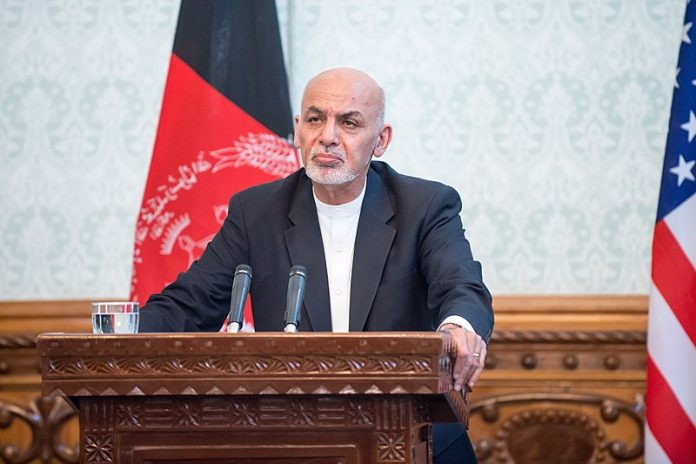The holding of Loya Jirga earlier this month to remove the last barrier on the road to intra-Afghan peace talks had raised prospects that the nineteen-year war would end in Afghanistan, bringing peace and stability in the country. The Loya Jirga grand assembly approved the release of the remaining Afghan Taliban prisoners, a key hurdle in starting the talks between president Ashraf Ghani‘s Government and the Taliban representatives; the release of the Taliban insurgents was agreed upon in Feb. 29 peace treaty in Doha, Qatar between the United States and the Taliban.
Following the approval by the grand consultative assembly, Kabul government passed an order to release the remaining 400 Taliban detainees though it appeared unwilling to release some prisoners whom it regarded as hardcore fighters. Although holding the Loya Jirga and the latter’s consent on the release of the insurgents was seen as a breakthrough, the subsequent developments have been discouraging for the start of the negotiations postponed indefinitely: Kabul stopped the release of the remaining Taliban inmates while accusing the Taliban of failing to free all government soldiers in its custody. The claim, however, has been rejected by the insurgents.
There certainly was American pressure to release Taliban inmates because Washington seeks no further delay towards pulling its troops from Afghanistan. Under the Doha Accord, the US has pledged to withdraw its forces from the country. In fact, the pull-out had begun immediately after the deal was agreed with the Taliban; as of now, the number of the US forces stands at 8,600, some 5,000 less from about 13,000 troops. Meanwhile, the US Secretary of Defense recently said that another batch of about 3,600 soldiers would come back by November from Afghanistan. That will reduce the US presence to 5,000 troops. Already 5 American bases in Afghanistan have been closed though the intra-Afghan deal on the country’s future will be decisive on the complete pull-out of the US forces.
It is noteworthy that the two parties to the Intra-Afghan dialogue would seek to gain as much as possible from it to secure their political future. If the negotiations succeed to make way for peace, both sides would have made a new page in Afghanistan’s history. For a country which has seen decades of war and enmity across the political spectrum, it is not easy to have a political transition. But if the peace talks fail, Afghan Civil War is likely to intensify.
Pertinently, the dialogue is not meant solely for agreeing on a power-sharing equation; it is also about agreeing on the future political system in Afghanistan — the system which guarantees the protection of rights of all sections of Afghan society. Much will depend on the Taliban’s consent to the set-up which represents all sections of the population and secures their fundamental rights. There has been no clarity on whether the Taliban would embrace a democratic political set-up or not. Without representing all sections, the war-riven Afghanistan will not have a strong foundation for lasting peace and stability.
Further, not agreeing on inclusive government which represents all Afghan citizens will make the peace negotiations a meaningless exercise: the thrust is to be on ending the long war, not on plunging the society into the mire of civil war. The elite mentality of the Afghan leadership needs to be replaced with a concern for the ordinary Afghan citizens. In the absence of that concern, the elite political set-up sheltering leaders chosen not on merit but on wealth, political connections and lineage, will not be favorable for the ordinary Afghans because the elite leadership remains detached from the issues and concerns facing the people.
Significant enough is that the talks were expected to take place in a hostile climate. Since their deal with the US, the Taliban have become more aggressive in their attacks on Afghan government forces obviously to come to the negotiation table from the position of strength. Dozens of such attacks have been reported by the Taliban against the Afghan security forces, a situation which threatened the start of the talks and necessitated a ceasefire from both sides for the negotiations to commence. Continued hostilities will derail the negotiation process which is already stalled on the prisoner swap issue. At the same time, President Ashraf Ghani and his key advisors are seeking to strengthen their position to deal with the Taliban from a position of power. Sidelined by the US in its February deal with the Taliban, Kabul’s status was reduced to a mere spectator.
An all-important issue is the Taliban’s stance on the protection of the fundamental rights of women – the rights of education and working outside homes. The insurgent leadership has assured they would not oppose women education but their pledges have not been convincing. For many Afghans, the mere words are no guarantee and they feel that they exist nowhere in the Afghan peace process. In the country’s most recent presidential elections, the Afghan government could mobilize only 2.2 million out of the 9.6 million registered voters, a situation in which millions of Afghans have no representation and thus no voice on the questions like peace in Afghanistan.
The representation by the political parties, claiming to represent ordinary Afghans, has not stopped revolving around ethnic identity and from becoming dynastic; mostly the upper-class members of the ethnic communities get opportunities to air their views on different issues and concerns. As and when intra-Afghan talks become a reality, all sections of Afghan society need representation to decide their country’s future and political setup.
The views and opinions expressed in this article are those of the author.

Sheikh Shabir Kulgami is a Kashmiri (Indian) political commentator, analyst and columnist. He writes extensively on South Asia.


